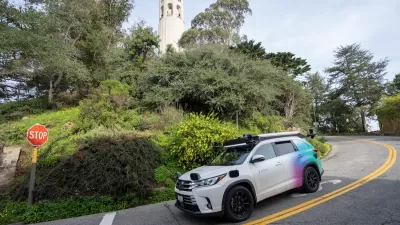A bill passed by the State Assembly and moving on to the Senate would require autonomous semi trucks to have a trained human operator in the vehicle.

According to an article by Maggie Angst in The Sacramento Bee, “California assembly members on Wednesday overwhelmingly voted to pass Assembly Bill 316, a proposal with bipartisan support to require a trained individual to sit behind the wheel of autonomous semitrucks and big rigs.”
Angst explains, “Current state law, established by the DMV, allows testing and deployment of driverless light-duty autonomous vehicles that weigh 10,000 pounds or less — stopping short of allowing the same for long-haul trucks and big rigs with autonomous capabilities.”
The bill’s author, Assemblywoman Cecilia Aguiar-Curry, D-Winters, said “we need to make sure that the roads are safe for the sake of our constituents and that jobs are safe for our truck drivers.” The bill is supported by truck drivers, who fear the loss of jobs to autonomous vehicles. “Supporters say the regulation would help protect people traveling on California roadways and support the livelihoods of truck drivers across the state.”
The move was criticized by industry leaders, who say the state should wait for federal guidance before deploying its own regulations on self-driving trucks. “Permitting the testing and deployment of autonomous trucks in California would help eliminate human errors, such as texting and driving and distraction, that contribute to traffic fatalities,” said Mufaddal Ezzy, senior director of state public affairs for software company Aurora.
FULL STORY: Lawmakers and Big Tech clash over the fate of self-driving semitrucks in California

Maui's Vacation Rental Debate Turns Ugly
Verbal attacks, misinformation campaigns and fistfights plague a high-stakes debate to convert thousands of vacation rentals into long-term housing.

Planetizen Federal Action Tracker
A weekly monitor of how Trump’s orders and actions are impacting planners and planning in America.

In Urban Planning, AI Prompting Could be the New Design Thinking
Creativity has long been key to great urban design. What if we see AI as our new creative partner?

Portland Raises Parking Fees to Pay for Street Maintenance
The city is struggling to bridge a massive budget gap at the Bureau of Transportation, which largely depleted its reserves during the Civd-19 pandemic.

Spokane Mayor Introduces Housing Reforms Package
Mayor Lisa Brown’s proposals include deferring or waiving some development fees to encourage more affordable housing development.

Houston Mayor Kills Another Bike Lane
The mayor rejected a proposed bike lane in the Montrose district in keeping with his pledge to maintain car lanes.
Urban Design for Planners 1: Software Tools
This six-course series explores essential urban design concepts using open source software and equips planners with the tools they need to participate fully in the urban design process.
Planning for Universal Design
Learn the tools for implementing Universal Design in planning regulations.
Gallatin County Department of Planning & Community Development
Heyer Gruel & Associates PA
JM Goldson LLC
City of Camden Redevelopment Agency
City of Astoria
Transportation Research & Education Center (TREC) at Portland State University
Jefferson Parish Government
Camden Redevelopment Agency
City of Claremont





























